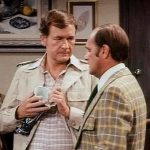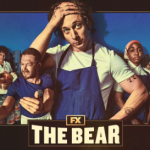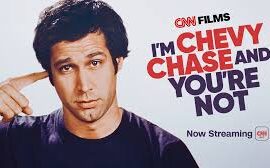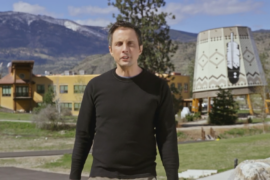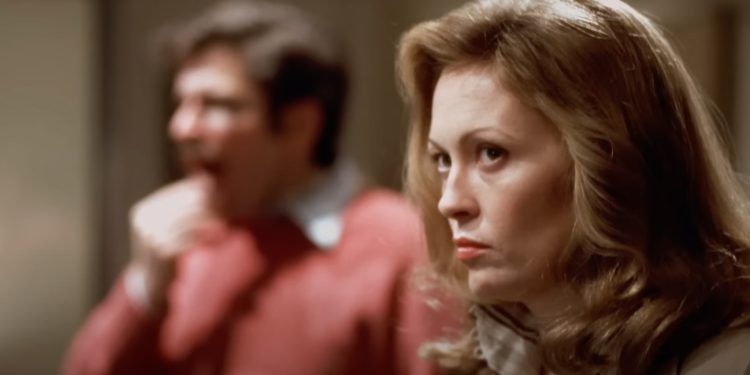
Back in 1995, during my days writing for TV Guide Canada, I had a memorable encounter with Faye Dunaway.
At the time, the Academy Award-winning actress had a reputation for being difficult; certainly on a set during a production but also in exchanges with reporters. “Good luck,” I was warned after landing the assignment.
My experience was, honestly, surprisingly fun. More on that later, but that interview came to mind as I sat down to watch “Faye: The Many Lives of Faye Dunaway,” an HBO documentary streaming now on Max as well as on Crave in Canada.
The 90-minute doc briskly profiles the iconic, 83-year-old actress. It is strictly a chronological approach, mixing film clips and talking heads. I would have liked more focus and behind-the-scenes nuggets about the making of “Bonnie & Clyde,” “The Thomas Crown Affair,” “Chinatown,” “Network” and other films, but it moves fast. After a few on-camera interview demands, Dunaway herself tells her story crisply and with candor. Clips of her from past interviews fill in some gaps.
On the personal side she reflects on a pattern of two year relationships, often with famous men, including an adulterous fling with Marcello Mastrioanni and a brief, intercontinental marriage to British photographer Terry O’Neill. He was the one who took that famous shot of Dunaway the morning after her 1976 Oscar win for “Network” at the Beverly Hills Hotel. Why this cycle of two year relationships? The template was set back in childhood, she believes, back when she and her brother and parents, including an often absent father, moved every two years.
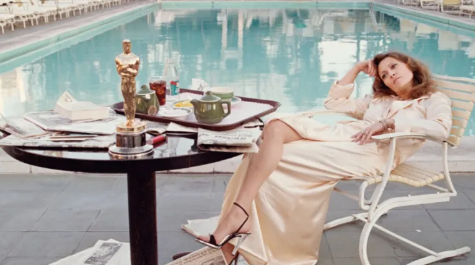
There was also her bipolar disorder, which wasn’t fully diagnosed and under control until much later in life. Her mercurial nature, she and others argue, actually enabled some outstanding performances, although often at a price.
advertisement
One who was there is Hawk Koch, second unit director on “Chinatown” who went on to a robust producing career. He thought she was a terror. Co-star Jack Nicholson, we are told, gave her a nickname: “Dread.”
Among those voicing support are Sharon Stone, who says she always admired Dunaway’s ferocious intent and is grateful that she fought to get away from stereotypical women’s roles in the sixties and seventies – everything from “Bonnie & Clyde” to “Oklahoma Crude.”
Perhaps the one film the doc dwells on the longest in “Mommie Dearest,” the bracing profile of Joan Crawford that derailed Dunaway’s career. While embraced as a “camp” classic today, critics at the time dismissed it as a pointless record of child abuse. Dunaway herself blamed the director for not reigning her in and feels her manic performance fed off her own bipolar struggles.
Dunaway’s career continued with many ups and downs. Teaming with Mickey Rourke on “Barfly” in 1997 is seen as one of the peaks. Rourke himself says the two had no conflict on the set. Discussion of the film leads to some remarks about Dunaway’s own addiction to, among other things, gin martinis.
Dunaway eventually found happiness as a mother, praising adopted son Liam, who got involved as an adult in a few of his mothers later projects.
Barely mentioned is Dunaway’s disastrous 1993 CBS sitcom that paired her with Robert Urich – It Had to Be You. This sorry misstep only lasted four episodes with Dunaway unable to shed her reputation for being unpleasant. That she wanted to be funny is evident. She literally stands on her head in the pilot. There was zero chemistry, however, between her and the affable Vegas star.
I was at the Television Critics Association press tour when the series was promoted. Dunaway said all the right things at the press conference. She wanted to do a comedy, she told reporters, because she never had before. “From the first role it’s always been very serious and that’s how I got cast and that’s what I did.”
She claimed Carole Lombard, Kay Kendall and Lucille Ball as great inspirations.
At the CBS after party, however, I heard some hair-curling, diva-behaviour stories from publicists who shall remain nameless.
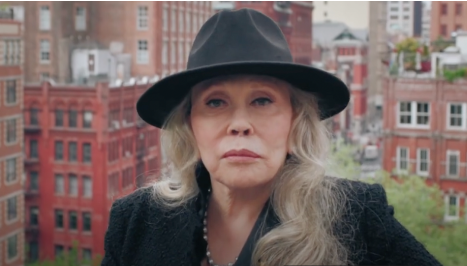
One of the disadvantages of a rapid-paced documentary is that it is hard to land on a real flesh and blood portrait. When the person being profiled is by all accounts complex, as well as the project’s main voice, you wonder if you are hearing all sides of the story. Dunaway does come off as candid and direct in the doc, and that helps make her somewhat sympathetic. Was it as fun as my experience with her in 1995 in the back seat of a Toronto limo? No, but, now that I have your attention, let me explain.
Dunaway was in Toronto as the star of the week on the CBC series The Road to Avonlea. She was an astounding casting coup for the Canadian historical drama, a family series that was also broadcast stateside at the time on the Disney Channel.
I remember travelling to the Sullivan Films studio, a former paint factory in Scarborough, Ont., and waiting pretty much all day to interview Dunaway. She was playing Countess Polenska, a Polish aristocrat who has retained her regal manner and little else. Maureen Stapleton was also in the episode, as were regulars Jackie Burrows, Mag Ruffman and Lally Cadeau.
I was accompanied to the set by the then editor at TV Guide Canada, Nicholas Hirst, who clearly had a crush on the Oscar-winner. Intros were made and then he ghosted, leaving me with what seemed like a 50/50 shot at best to get ten minutes for a cover story with the star.
Dunaway dodged the exchange all day long and only agreed to let me interview her in the cab on her way back to the airport. I knew I’d have at least an hour with her in Toronto traffic, unless the reports were true and I would get booted out somewhere along the 401.
Finally getting into the car, Dunaway put me on hold with a radiant smile and for the next ten minutes organised her life. Gary, the Toronto limo driver who had shuttled the likes of Marlon Brando, Mel Gibson and Goldie Hawn around town, didn’t even blink when Dunaway insisted on a short stop downtown enroute to the airport. It was rush hour, so he called customs and put them on full alert. Meanwhile, Dunaway kept both coasts hopping on her cell phone, mapping out the week ahead on a large, white binder between bites of a salmon salad.
Suddenly the binder slaps shut, the phone clicks off. Dunaway turns to me and says, “Okay, shoot.”
Things started predictably. Dunaway answered questions about coming north for this bit of stunt casting, why television now and her overall career, all with carefully reasoned answers she’d given a million times before.
“Did you ever turn anything down before that you regretted later?” I asked.
“Two or three times,” she said. “Years ago I turned down ‘Norma Rae’ and I guess I’d take that now. Made Sally [Field] a career.”
“Did she send you any gifts?” I asked.
“Not yet – I’m still waiting.”
As we settled in for a long drive through traffic, Dunaway dropped the script and seemed to truly relax. We talked about a radical new film at the time, “Pulp Fiction.” We talked about Norman Jewison, and she almost made Gary turn the car around when I mentioned her “Thomas Crown” director had an office downtown. We talked about the night she won an Oscar, working opposite Jack Nicholson and Marlon Brando and an autobiography she was working on at the time. (“Looking for Gatsby: My Life” 1995 Simon & Shuster.)
We went off the record when the subject of Andrew Lloyd Webber came up. Dunaway was fired from playing Norma Desmond in a stage version of “Sunset Boulevard,” a painful setback and a matter that was settled in litigation as reported in the “Faye” documentary.
“It was the first time anyone had ever questioned my professional abilities,” she said after telling me to turn the tape recorder back on. “I’ve always worked really hard–really hard. I had a teacher once–I think it was a director–who said to me, ‘If anything can stop you, let it.’ I was not going to let anything stop me.”
The conversation turned back to the slow progress at hand.
“How we doin’ Gary? You certainly have taken the backroads!” Dunaway was anxious to get back to Connecticut and see her son Liam.
She reached into her purse and took out some photos, showing him off along with other shots of nieces and nephews. She spoke a little french.
Just before the limo pulled into Terminal 2, she glanced out the window at a movie marquee, one of those suburban multiplexes, and absently checked out what was playing.
“Never,” she said when asked if she watched herself on the big screen. Usually it’s because they hate seeing themselves six stories tall. Tired and pensive, Dunaway had a different take.
“Once it’s up there on the screen, I’m powerless,” she said softly, almost to herself. “If there’s one thing I just can’t stand, it’s no longer being in control.”


